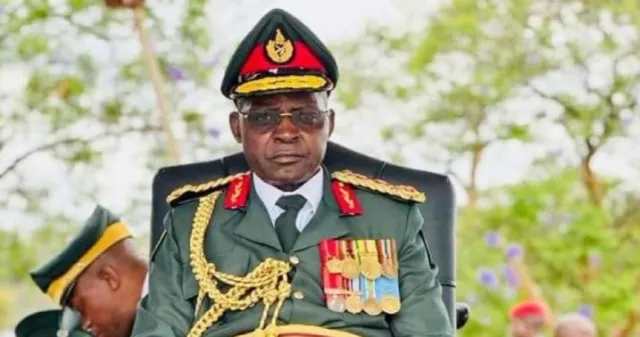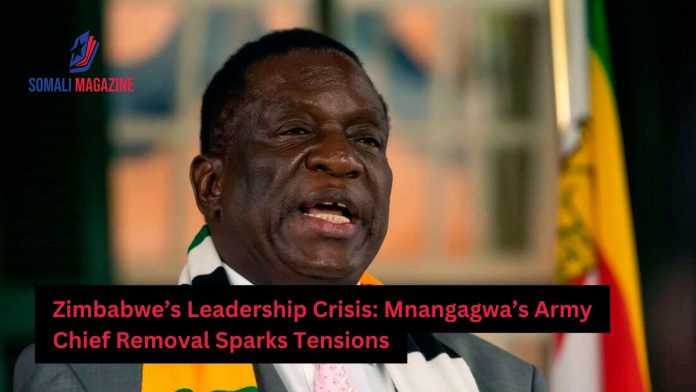Facebook Twitter Instagram Somali Magazine - People's Magazine
Zimbabwean President Emmerson Mnangagwa has removed Lieutenant General Anselem Nhamo Sanyatwe as Commander of the Zimbabwe National Army (ZNA), a move widely seen as an attempt to consolidate his grip on power amid rising political tensions. The decision, announced on March 25, 2025, comes just days ahead of planned nationwide protests calling for Mnangagwa’s resignation, further fueling speculation about internal divisions within Zimbabwe’s ruling elite.
Sanyatwe, a key ally of Vice President Constantino Chiwenga, has been reassigned as Minister of Sport, Recreation, Arts, and Culture, replacing Kirsty Coventry, who recently stepped down after being elected President of the International Olympic Committee. While the official narrative frames Sanyatwe’s reassignment as a promotion, political analysts suggest it is a calculated move to weaken Chiwenga’s influence within the military and neutralize potential dissenters ahead of the March 31 protests.
The protests, organized by opposition groups and civil society organizations, have been dubbed the “final push” against Mnangagwa’s rule. Demonstrators accuse the president of exacerbating Zimbabwe’s economic crisis, deepening corruption, and suppressing dissent. War veterans, who played a pivotal role in Zimbabwe’s liberation struggle, have openly called for Mnangagwa’s removal, further intensifying the political stakes.
Sanyatwe’s removal is the latest in a series of reshuffles targeting key figures in Zimbabwe’s security apparatus. In recent months, Mnangagwa has replaced the heads of the police and intelligence services, signaling growing concerns about loyalty within the military ranks. Analysts believe these moves are aimed at preempting a potential coup, as tensions between Mnangagwa’s loyalists and Chiwenga’s faction escalate.
The rivalry between Mnangagwa and Chiwenga dates back to the 2017 coup that ousted longtime ruler Robert Mugabe. While Mnangagwa emerged as president, Chiwenga retained significant influence within the military, creating a power dynamic that has fueled factionalism within the ruling ZANU-PF party. The latest reshuffle underscores Mnangagwa’s efforts to consolidate power and eliminate threats to his leadership.

Sanyatwe’s reassignment has drawn mixed reactions from Zimbabweans. While some view it as a strategic move to stabilize the military, others see it as a sign of growing instability within the government. “This reshuffle is not about governance; it’s about survival. Mnangagwa is trying to protect himself from internal threats,” said political analyst Eldred Masunungure.
The timing of the reshuffle is particularly significant, as it comes just days before the March 31 protests. Intelligence reports suggest that elements within the military may be sympathetic to the demonstrators, raising concerns about potential unrest. Mnangagwa’s administration has warned against “people who want to disturb our peace,” signaling a readiness to crack down on dissent.
The removal of Sanyatwe also highlights the broader challenges facing Zimbabwe’s security forces. The military, which has historically played a central role in the country’s politics, is grappling with internal divisions and declining public trust. Analysts warn that these dynamics could undermine the government’s ability to maintain stability in the face of growing opposition.
As Zimbabwe navigates this turbulent period, the focus remains on the March 31 protests and their potential impact on the country’s political landscape. The demonstrations, fueled by widespread frustration over economic hardships and political repression, represent a critical test for Mnangagwa’s leadership.
The reshuffle serves as a stark reminder of the deepening power struggle within Zimbabwe’s ruling elite. While Mnangagwa’s moves may strengthen his position in the short term, the long-term implications for the country’s stability remain uncertain.

